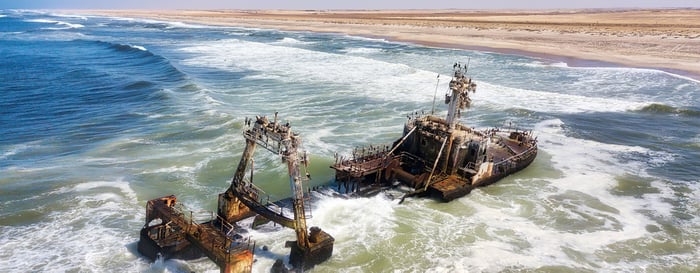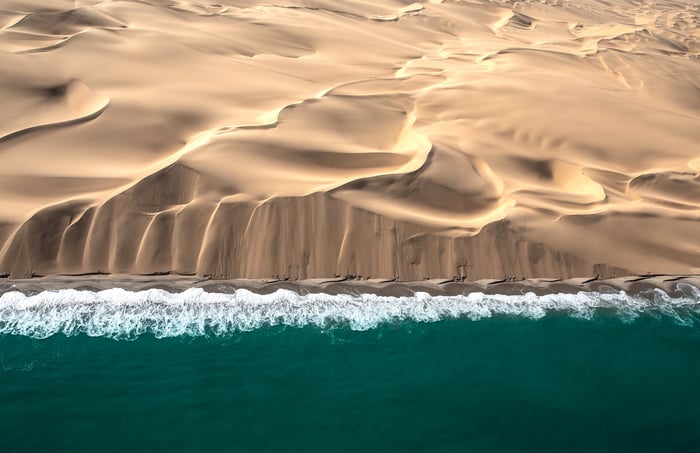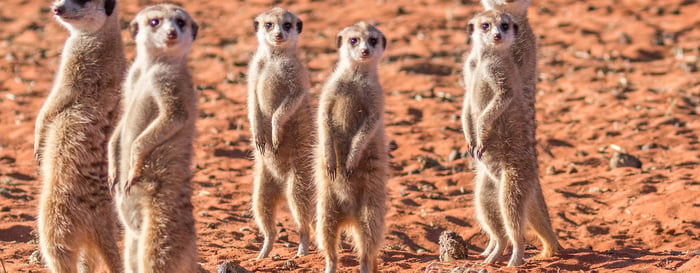All good stories start around a campfire and it was when Singaporean photographer Alwyn Chong, and his friend Roger Dugmore, were hunkered around a campfire on safari in Botswana that they first came up with the idea of canoeing down the Okavango Delta. Dugmore’s nephew had just told them about an expedition where he canoed 1,600km from Angola to Botswana and Chong was instantly hooked. “I said I would have jumped at the chance of joining him if I’d known about it,” says Chong. “It was then that Roger and I decided to canoe down the Okavango Delta.”
A year later, in June 2015, Chong, Dugmore and four others set off on an African adventure and paddled 400 kilometres along a crocodile-infested river in Botswana. It was the fifth time that Chong had joined Dugmore and his team on safari, but it would be the first time that they would take to the river and see a part of Botswana they hadn’t seen before. “My first days in Botswana are always spent re-acquainting myself with the familiar smells and sights, taking time to clear the mind and unwind from the city,” says Chong. ‘This time was slightly different, there was anticipation as it was only my second time in a canoe, and my first true expedition.”
The team made sure that they had the all the right equipment for their trip and planned out a route as best as they could, knowing that the delta’s channels are not always permanent. “Safety was also a primary concern and we had to be prepared for whatever may happen,” says Chong. “It was our mission to start together as six and end together as six.”

The journey would take them past Buffalo Fence, Fridge Island and on to the Okavango Panhandle, a narrow strip of swamp land that extends to the Namibian border.
While it was the first time that Chong had ever done anything like this on this scale, he wasn’t phased by what lay ahead of him, although he confesses that it was more to do with 'ignorance is bliss'. “At the beginning, you don’t know what you are about to encounter. You go with a naive eye. You think that it’s going to be beautiful. It’s only when you get further into your adventure you realise what it’s going to involve,” he says. “If you don’t know what’s up [the river], it gives you the courage to jump in.”
The night that they arrived at the river they were treated to a slight rain shower, but the morning of departure they were treated to clear skies. The photographer was instantly inspired. From the changing landscapes, to the flocks of birds, and the regular sightings of elephants and hippos, the photographer was overwhelmed. “I had been on safari to Botswana four times. But I was amazed by how much of the delta I hadn’t seen,” says Chong.

They would see crocodiles every couple of kilometres, but Chong said that as soon as the crocodiles saw the canoes they would dive under the water and the canoeists would just paddle over them. However, when they met some hippos, they did change direction. “We saw a huge pod of hippos with their young,” says Chong. “The channel wasn’t very wide so we had to find another way out.”
While the water was flat, the wind would cause the canoeists difficulty, particularly when they had to cross wide open areas with very little shelter. “There were a few tough days when the wind was strong and paddling was tough,” says Chong. “However, we had to keep pushing forward as we needed to get to our campsite. A lot of the grassy areas are floating plants, you need to get to solid ground before it gets dark so that you can pitch your tent and not lose your way.”
Their only close call on the trip actually happened on dry land. “We were sitting chatting around the fire, when suddenly we were in the middle of a zebra stampede,” says Chong. “We made a lot of noise to scare them off, but we basically couldn’t do anything. We braced for impact. About 20 of them ran by us.” Luckily, no one was hurt. But Chong adds. “You laugh about it afterwards, but we did wonder what was chasing them.”

Chong said that it took him a few days to get into the swing of things, but it wasn’t long before spending time on the river became second nature. “We would spend time on the sand bars to enjoy our daily dip in the delta. And use the fine sand and silt at the bottom for exfoliation.”
They also had the chance to meet some of the local communities who were spread out along the river. And when Chong wasn’t paddling, he was taking photographs. Spending hours on end in a canoe did have its limitations, but somehow Chong managed. “Photography-wise when you’re in a canoe, you can’t take a lot of equipment with you,” says Chong. The other issue for Chong was that he wasn’t resting on a stable surface. “It’s not like when you’re in a vehicle and you can manoeuvre yourself into position. You can’t always go back to that point so I and to take what comes,” he adds.
However, the photographer managed to capture an array of images, which he has now collated in a book that he is selling to raise funds for a children’s charity in Botswana.
When the 15-day expedition was complete, the city slicker admits that he wished he could have gone on for longer. “I was really sad it was all over. We spent the first few days trying to get into the swing of things, then we settled down and before we knew it we were leaving… We were told we were quite crazy [to do it]. It was an amazing journey,” says Chong.
You can follow Chong's latest adventures via his instagram @alwyn.chong

Skeleton Coast Flying Safari
- Meet the Himba people close to the Angolan border, Africa
- Fly with the most experienced pilots and guides in the country – The Schoeman family
- Enjoy a boat trip on the Kunene River observing bird life and crocodiles
- Go on nature drives and walks in Hartmann’s Valley
- See ancient rock engravings found amongst the rocks
The Best of Northern Namibia
Damaraland Skeleton Coast Etosha National Park Namibia Africa
-
Witness important concentrations of rock art in Twylfelfontein
-
Explore Africa's Skeleton Coast’s rugged desert
-
See black rhino, kudu, giraffe, zebra, lion, cheetah, leopard at Onguma Game Reserve
-
Visit Etosha National Park, home to a rich array of wildlife
-
Head on an off-road night drive around Okonjima Nature Reserve
The Best of Southern Central Namibia
Sossusvlei Swakopmund Namibia Africa
-
Spot hyenas, jackals, antelopes and wild cats at NamibRand Reserve, Africa
-
Watch the sunrise near the red dunes of Sossusvlei
-
Discover the avenues and colonial architecture of Swakopmund
-
Explore Deadvlei, a white, salt claypan, dotted with ancient trees
-
Visit Namibia’s wetlands, and see flamingos and springbok in a 4X4











